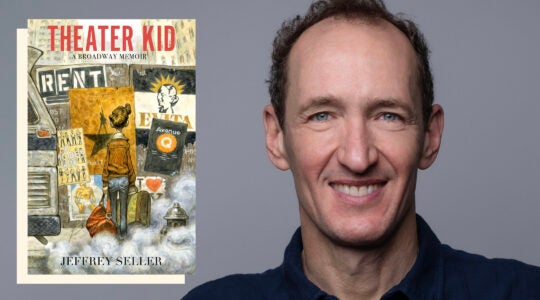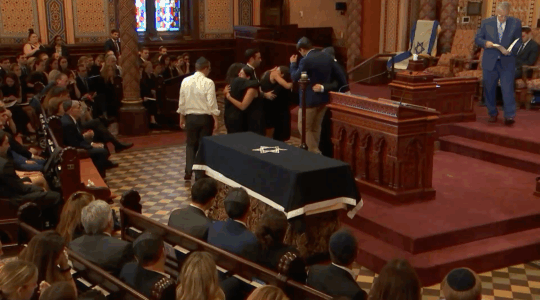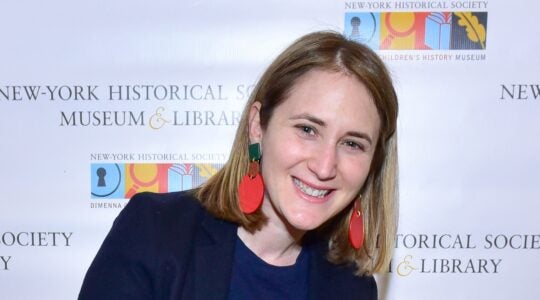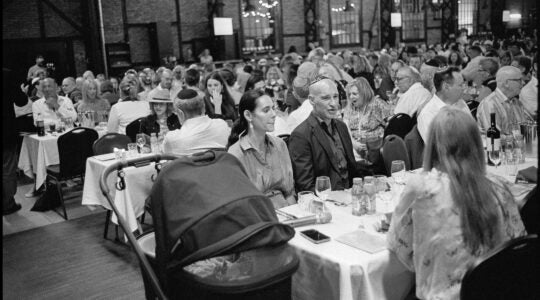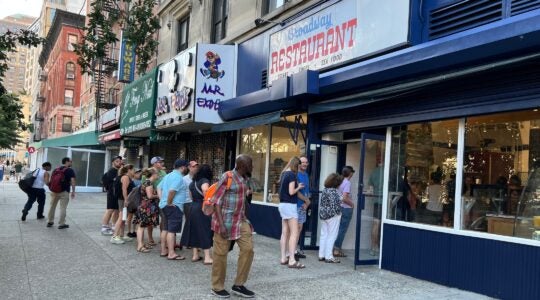In Paris, several thousand people took to the streets last week to protest the brutal anti-Semitic murder of an 85-year-old Holocaust survivor.
In London, about 1,500 Jews demonstrated outside Parliament last week to accuse Labour Party leader Jeremy Corbyn of failing to address anti-Semitism in his party.
In St. Petersburg, Fla., the Florida Holocaust Museum has come under a steady stream of cyber-attacks originating from countries “outspoken in their anti-Semitism.”
In New York, the Anti-Defamation League, citing what it described as an “alarming” escalation of anti-Semitic incidents worldwide, asked President Donald Trump Monday to appoint a Special Envoy to Monitor and Combat Anti-Semitism, a post created in 2004 that has been vacant for the past 15 months.
“By nominating a respected and effective advocate,” the ADL said, “you will be reasserting America’s moral leadership against anti-Semitism and reassuring Jewish communities that America stands with them and their ability to live securely as Jews wherever they are.”
The move comes just a week before the commemoration of Yom HaShoah, Holocaust Remembrance Day, as several Holocaust museums around the country have new initiatives to address the upsurge in anti-Semitic incidents.
The Holocaust Memorial & Tolerance Center of Nassau County, L.I., developed a program to help school districts deal with racial, prejudicial and anti-Semitic graffiti with both tolerance training at the museum and school visits.
“We go into schools — sometimes with a police officer — and explain not only the history of these symbols and slurs, but we talk of the impact they have on the local, national and international community,” explained Helen Turner, the center’s director of youth education. “We tell them that this is racist [graffiti] and is deemed a bias incident and sometimes a hate crime. … We have seen a significant uptick in these incidents and we are getting more and more calls from schools concerned about this sort of thing.”
In addition, the Museum of Jewish Heritage in Battery Park City expects to unveil a new permanent exhibit in 12 to 18 months exploring the history of anti-Semitism.
“Our leadership made a decision several years ago to focus on anti-Semitism, and that was the reason I was brought in,” said Abraham Foxman, the former national director of the ADL and now the museum’s director of the Center for the Study of Anti-Semitism.
The permanent exhibit will include newspapers, sculptures, political and art posters and postcards going back 200 years, and even children’s games — an anti-Semitic monopoly game whose theme is that Jews are obsessed with money, an anti-Semitic canard hundreds of years old.
Foxman said he found in speaking with students from other countries that the Holocaust exhibits did not resonate with them as much as one might expect.
“In order for them to understand how a Holocaust could happen, we need to explain what anti-Semitism could do.”
“What is relevant is prejudice — and anti-Semitism is the mother of all prejudice,” he said. “In order for them to understand how a Holocaust could happen, we need to explain what anti-Semitism could do. If not for anti-Semitism, Hitler could not have succeeded. And so the message to my Dominican and Bangladeshi kids is that you could be subjected to prejudice yourselves if you don’t stand up; you too could be a victim.”
Beyond the Hudson, the upsurge in anti-Semitic incidents is responsible for a significant increase in visitors last year — more than 65,000 in all — to the Holocaust Memorial Center in Farmington Hills, Mich., according to Rabbi Eli Mayerfeld, its CEO.
“Since Charlottesville [last year’s white nationalist march in Virginia], we received an influx of calls and have had countless visitors say that inspired their visit to the Holocaust Memorial Center,” he said in an email. “Now more than ever, we must teach what happens when hate is not stopped.”
The Florida Holocaust Museum in St. Petersburg has been getting “thousands of cyber-attacks each week,” according to Elizabeth Gelman, the museum’s executive director. “They are trying to hack into our website and server, but they have not been able to.”
Out in California, the ADL has opened an office in Silicon Valley to work with social media companies to combat anti-Semitism online and to address cyber hate. And the educational arm of the Simon Wiesenthal Center, its Museum of Tolerance in Los Angeles, is increasing programming about anti-Semitism, human rights violations, digital terrorism, hate programs and community-based programs dealing with tolerance.
“We’re living in an environment where unfortunately civic dialogue has shifted and allowed more extremist voices to speak up and spread hateful sentiments.”
Concern about the rise in anti-Semitism and hate speech prompted the Philadelphia Holocaust Remembrance Foundation to create an outdoor Holocaust Memorial Plaza in the triangular lot on which the country’s first public Holocaust memorial was erected in 1964. The $7 million development began earlier this year and is slated to be completed in the fall.
“We’re living in an environment where unfortunately civic dialogue has shifted and allowed more extremist voices to speak up and spread hateful sentiments,” said Eszter Kutas, acting director of the Philadelphia Holocaust Memorial Plaza. “Our intention is to speak up and show what has happened historically when not enough people spoke up and instead allowed this hateful behavior to become commonplace. It led to the systematic persecution of the Jews and other minority groups, ultimately leading to one of the worst tragedies in human history.”
In Dallas, that city’s Holocaust and Human Rights Museum, which was founded in 1984 by Dallas-area Holocaust survivors, is building a new museum that is slated to open in the fall of 2019.
“Unfortunately, our work has never been more relevant or important than it is today,” said Mary Pat Higgins, president and CEO. “Because of this, we have increased our educational footprint to include the surrounding states of Oklahoma, Louisiana and Arkansas, and we have increased our programming outreach. … The museum bears a special responsibility to fight anti-Semitism in all its forms.”
She noted in an email that there has been a 50 percent increase in visitors in the last five years.
The Holocaust Museum Houston, which opened in 1996, has since October been at a temporary site while a new facility is built that will double its size when it opens next spring. Despite its temporary home, the number of visitors has increased of late by more than 20 percent.
“The number of visitors is far in excess of what we had thought,” said Kelly Zuniga, chief executive officer. “The fact that we are attracting people in our temporary space is pretty amazing to me.”
“We feel particularly responsible to … make sure people understand that anti-Semitism is not just history but exists today.”
When the new facility opens, it will total 56,499 square feet, which Zuniga said is about the same size as the Holocaust museum under construction in Dallas but smaller than the Illinois Holocaust Museum & Education Center in Skokie, Ill., which is about 65,000 square feet.
“We feel particularly responsible to … make sure people understand that anti-Semitism is not just history but exists today,” said Shoshana Buchholz-Miller, the Illinois museum’s vice president of education and exhibitions.
The museum attracts about 60,000 students and educators each year and Buchholz-Miller said she is convinced they “relate to the stories we tell,” particularly because they get a chance to speak with a survivor.
“Hearing from a survivor can be most impactful,” she said. “We have 60 plus survivors and we make sure the students hear from them directly.”
In October, the museum was the first to introduce an interactive holograph display of survivors created by the University of Southern California Shoa Foundation. The Museum of Jewish Heritage in Manhattan has more recently introduced the exhibit.
“We found that visitors are able to make an emotional connection with the interactive survivors that is similar to one you would make with a live survivor,” Buchholz-Miller observed.
She said that eight survivors have already made a video recording for the exhibit, answering as many as 2,000 questions about their experiences. Visitors are able to ask survivors questions and the interactive exhibit selects the pre-recorded responses.
Buchholz-Miller said the museum has spoken out about the hate crimes taking place in the U.S. She noted that it placed full-page ads in the Chicago Sun Times and the Chicago Tribune decrying the rise of hate speech. And that more recently it has spoken out about a neo-Nazi who is the Republican nominee for Congress in Illinois.
At the United States Holocaust Memorial Museum in Washington, D.C., Tad Stahnke, director of the Initiative on Holocaust Denial and Anti-Semitism, said in an email that the museum has “launched a new initiative on anti-Semitism” that focuses on Holocaust denial and state-sponsored anti-Semitism. … There is no single solution. Countering this rise requires responding to specific incidents when necessary and ongoing work to foster changes in attitudes and behaviors.”
Eric Ward, an African American civil rights activist and expert on hate speech, attributed the rise in anti-Semitic incidents to a “greater level of willingness by the American public to tolerate [them]. We’ll see a decrease when people perceive they don’t have permission to act out with anti-Semitic acts.”
He said Holocaust museums “have been the constant anchor” that have focused on this issue, partnering with non-Jewish organizations to keep the topic as a “critical issue in America.”
The New York Jewish Week brings you the stories behind the headlines, keeping you connected to Jewish life in New York. Help sustain the reporting you trust by donating today.
